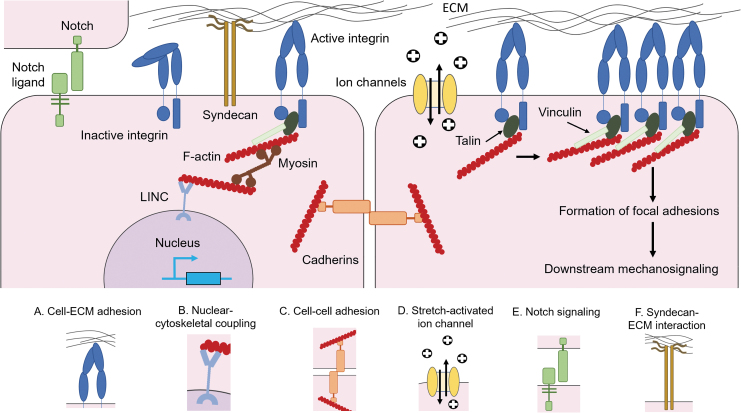FIG. 3.
Cellular mechanosensing of ECM viscoelasticity. (A) Cells directly sense mechanical resistance to ECM viscoelasticity through cell-ECM adhesions (e.g., integrin binding) and the formation of FACs. (B) Cell-ECM bonds directly link ECM mechanosensing to gene expression via nuclear-cytoskeletal interactions. (C) Adjacent cells are mechanically coupled by cadherin complexes to facilitate cell–cell adhesion. (D) Mechanosensitive SACs regulate ion transport across the cell membrane to regulate downstream mechanosignaling. (E) Notch signaling requires mechanical force to induce proteolytic activation. (F) Syndecan-ECM interactions maintain cell homeostasis and can interact with focal adhesion associated molecules. FACs, focal adhesion complexes; SACs, stretch-activated ion channels.

